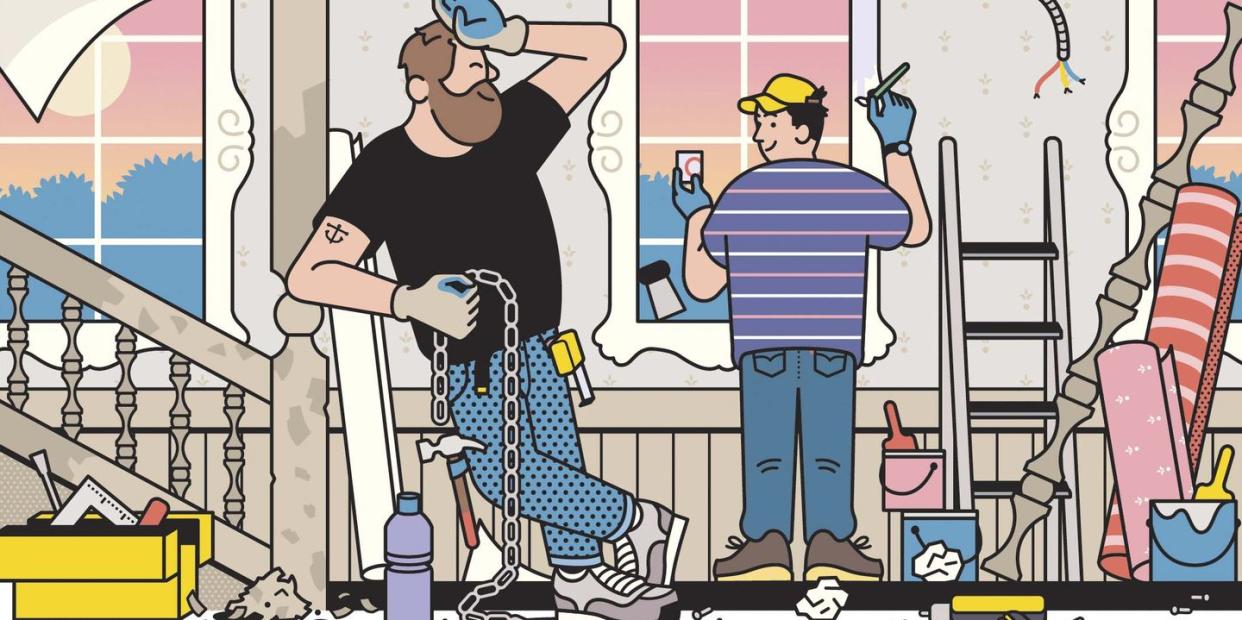How Much Extra You Really Need to Budget When Renovating a Historic Home

Historic preservation in America began in earnest in the 1960s, when the government passed the legislation that created the National Register of Historic Places—then reached a fever pitch in the mid-1970s as the country’s bicentennial approached. Suddenly, everyone wanted to save the crumbling log cabins and old Victorians in their communities, giving rise to a boom in historical societies and living history museums.
As charming as historic spaces can be, the realities of living in an old home can be daunting—and it’s natural to want to make your own mark. “My job is to encourage people to preserve, but within the realm of reality,” says preservationist Gabrielle Begue, a senior associate at the New Orleans firm MacRostie Historic Advisors. “We're always balancing conservation motivations with practical needs, budget, and what's required for modern living. You can end up with unique spaces when you marry those two in the right way.”
In other words, historic homes aren't meant to be trapped in amber. What’s more, the definition of what counts as “historic” itself—to preservationists, any property more than 50 years old—is constantly in flux. (These days, that means the postmodern suburban sprawl of the 1960s and 70s is aging into potential significance.) “I see us as stewards of these historic homes—they had lives before us, they'll have lives after us,” says Begue. “We're taking care of these buildings, not imposing our will on them.” Here's how to update one while maintaining its spirit (and your sanity).
Strike a balance between old and new.
Should you paint the dark woodwork or exposed brick? Can you pull out a dated built-in? For homeowners renovating older homes, Minneapolis-area designer Victoria Sass says to rid yourself of a sense of duty to create a shrine to the past. “Your house has been changed over the years by the people who have come before you, and they've made this space what they wanted it to be—that's why your house looks the way it does today,” she says. “This is just your time, your chapter in the story of your house, and you have to make your peace with making the environment what you want to make it.”
Weigh the benefits of repairing historic details.
Historic homes often feature durable, high-quality building materials like cypress, heart pine and oak—natural resources that were much more abundant at the time—and can withstand a lot of wear and tear. Even worn-looking elements can often be restored; missing elements can be fabricated to match based on still-intact clues. “If there's one historic window sash remaining in the whole house, we can conclude that the rest of the house originally did have matching sashes and those can be replicated,” says Begue.
If you can’t save it, replace it.
Replication is also an option. “When an old home has incredible plaster moldings, it's nice to retain them—but it’s not always worth [the effort] to save them,” says Josh Wiener, the founder of the luxury New York building firm SilverLinings. For a recent client, replacing the moldings allowed him to create a carbon copy of the original look, but hide the modern air conditioning system within the decorative element. Another client went a step further, asking for the new elements to be distressed in order to match the originals. “They had me beat the mahogany woodwork with chains so that it looked like it had been there forever,” he says.
Leave clues.
Add bathrooms, tweak floor plans—but the notion of “leave no trace” doesn’t apply when renovating an old home. “We always encourage clients to leave some sort of remnant of what was removed—so if you knocked out a wall, leave some sort of [remnant or doorway], what we call a ‘wing’ in the industry,” says Begue. “That way, somebody could say, ‘There was a wall here and now there isn't, but I can recreate it if I wanted to.’”
Check for potential tax credits.
Historic rehabilitation tax credits are a key driver in preservation work for commercial properties—but some municipalities also have incentives for homeowners who want to keep a home’s history alive. (That said, you’ll also need to do your homework if you end up pursuing those credits, as they often dictate just how extensive your renovation can be.)
Be prepared for surprises.
A near-universal truth, especially with an older home: There will be hidden surprises that you won't discover until you start really digging in. “Historic houses have layers from previous renovations, and you have to peel them back to really understand what's going on and to do it right,” says Begue. Often, those surprises aren’t great. Begue, based in New Orleans, sees a lot of structural damage thanks to a warm, wet climate that makes termites commonplace. But there are good surprises, too. “Things like old wallpaper, or when we pull up old vinyl tile in a kitchen and discover that the original wood floors only need to be sanded and refinished—those are really exciting moments that can inspire your design and make it worth it.”
NerdWallet recommends creating a cash reserve of 10 to 20 percent of your project budget to cover unexpected costs.
Follow House Beautiful on Instagram.
You Might Also Like

